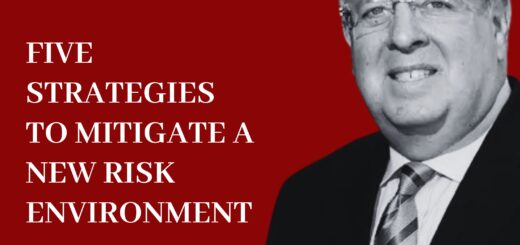In-House Counsel: A Juggling Act (Part I of II)
 Let’s try and look at the world from the viewpoint of in-house counsel. In a two-part series, I try and focus on the current state of in-house counsel. Part I focuses on the overall view from a macro-standpoint. Part II looks at significant risks facing companies today.
Let’s try and look at the world from the viewpoint of in-house counsel. In a two-part series, I try and focus on the current state of in-house counsel. Part I focuses on the overall view from a macro-standpoint. Part II looks at significant risks facing companies today.
In today’s aggressive enforcement environment, you have to empathize with in-house counsel. From my vantage point, most in-house counsel are overworked and overstressed. And for good reason.
They do not have enough resources and they face an ever-growing set of risks which require them to devote more and more time to responding to issues. They are frequently putting out fires or responding to demands from their business clients. In this situation, it is hard to devote adequate time to proactive compliance issues.
How does in-house counsel prioritize their time to address the risks? Well, depending on the industry (e.g. defense contracting or medical service or equipment provider and the specific regulatory environment (e.g federal and/or state), the answers are fairly obvious (e.g. False Claims Act or FCPA). On the other hand, some risks cut across all businesses such as antitrust, data privacy or data breaches.
While the answers as to prioritizing risks are relatively straight-forward, the harder question is how does in-house counsel respond to make sure the company is in compliance and minimizes risk. That is where the rubber meets the road.
One of the more ridiculous responses to the constellation of risks is to create a “risk managemer.” If ever there was a position or a trend which should be avoided, I nominate Risk Managers to be first on the chopping block.
Contrary to popular belief, companies do not need a “Risk Manager.” To me, everyone in the company is involved in risk management and no one person should be charged with responsibility for managing these so-called risks. In-house counsel has a leading role to play in risk management along with compliance staff. The money and resources thrown at compliance through creation of a “Risk Manager” should be immediately reallocated to beef up compliance and legal staff. No ifs, ands or buts on this issue. It is a no-brainer.
Before addressing individual risks, you have to acknowledge a sea-change in the environment in which in-house counsel operate. The Laura Stevens criminal case changed (or should have changed) the way in which in-house counsel interact with government regulatory agencies through informal dialogue. In-house counsel has to fear that any omission or incorrect representation can be turned against them as fodder for criminal prosecution for obstruction of justice or false statements. The government’s misguided criminal prosecution of Laura Stevens sent shivers down the backs of every in-house counsel. It should have also created a new protocol for dealing with informal requests for information and most especially company responses to letter requests from regulatory agencies.
Without repeating the facts from my prior posts on this topic, the risk for in-house counsel is created when the government requests documents from a company responsive to a particular question. For those in-house counsels who work for global companies, they need to be sure that all – and I mean all – possible locations are searched for documents which may be responsive to the inquiry. Any negotiations with the government relating to the terms and conditions for the response need to be memorialized in writing and contemporaneous notes.
The Laura Stevens case has had an unfortunate impact on the ability of government and private attorneys to work through informal communications — the lifeblood of government and business interactions. By requiring more formal communications, the government has ensured that it will operate more inefficiently and impose greater burdens on in-house counsel. The regulatory wheels will, by definition, slow down.















